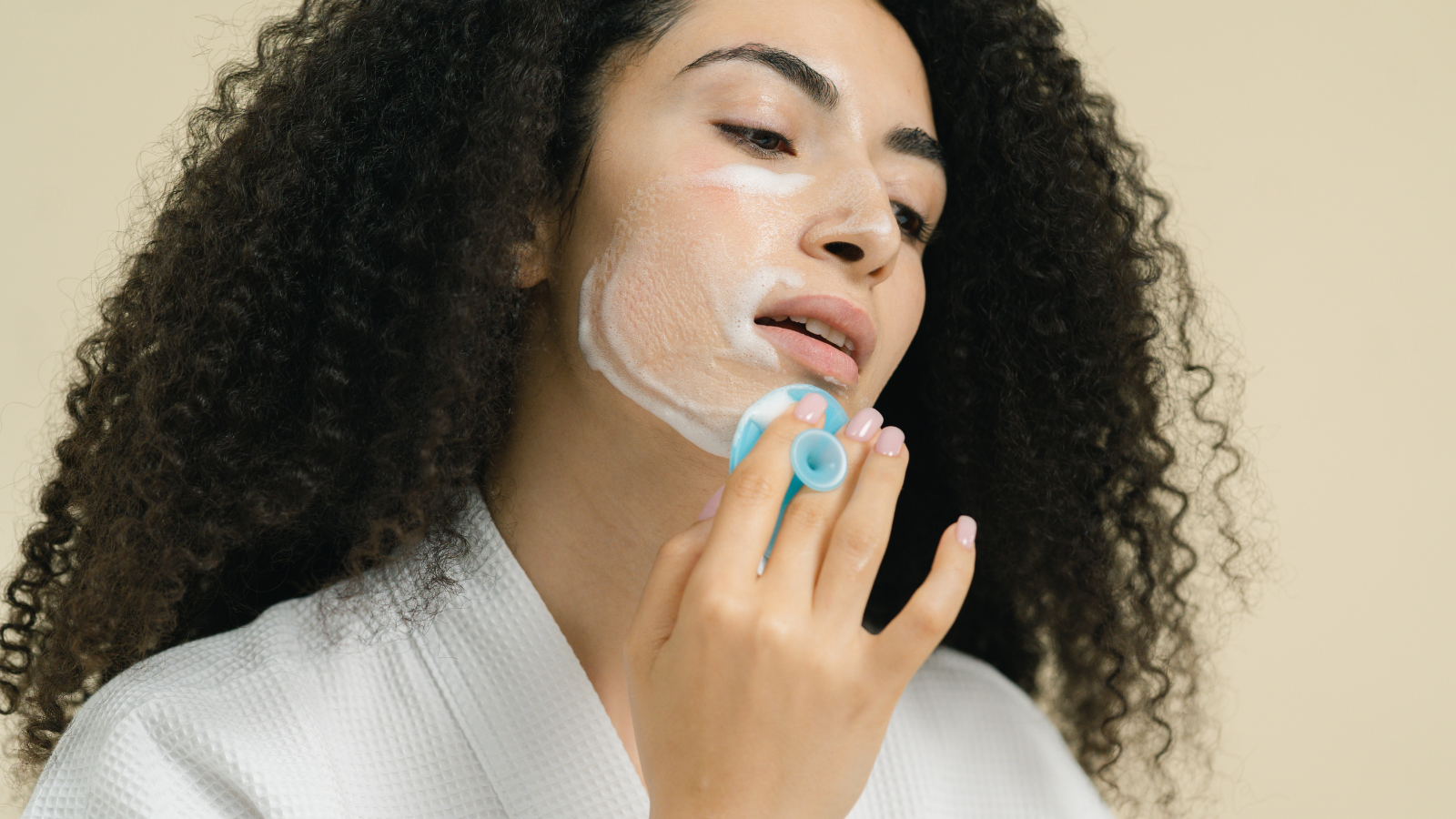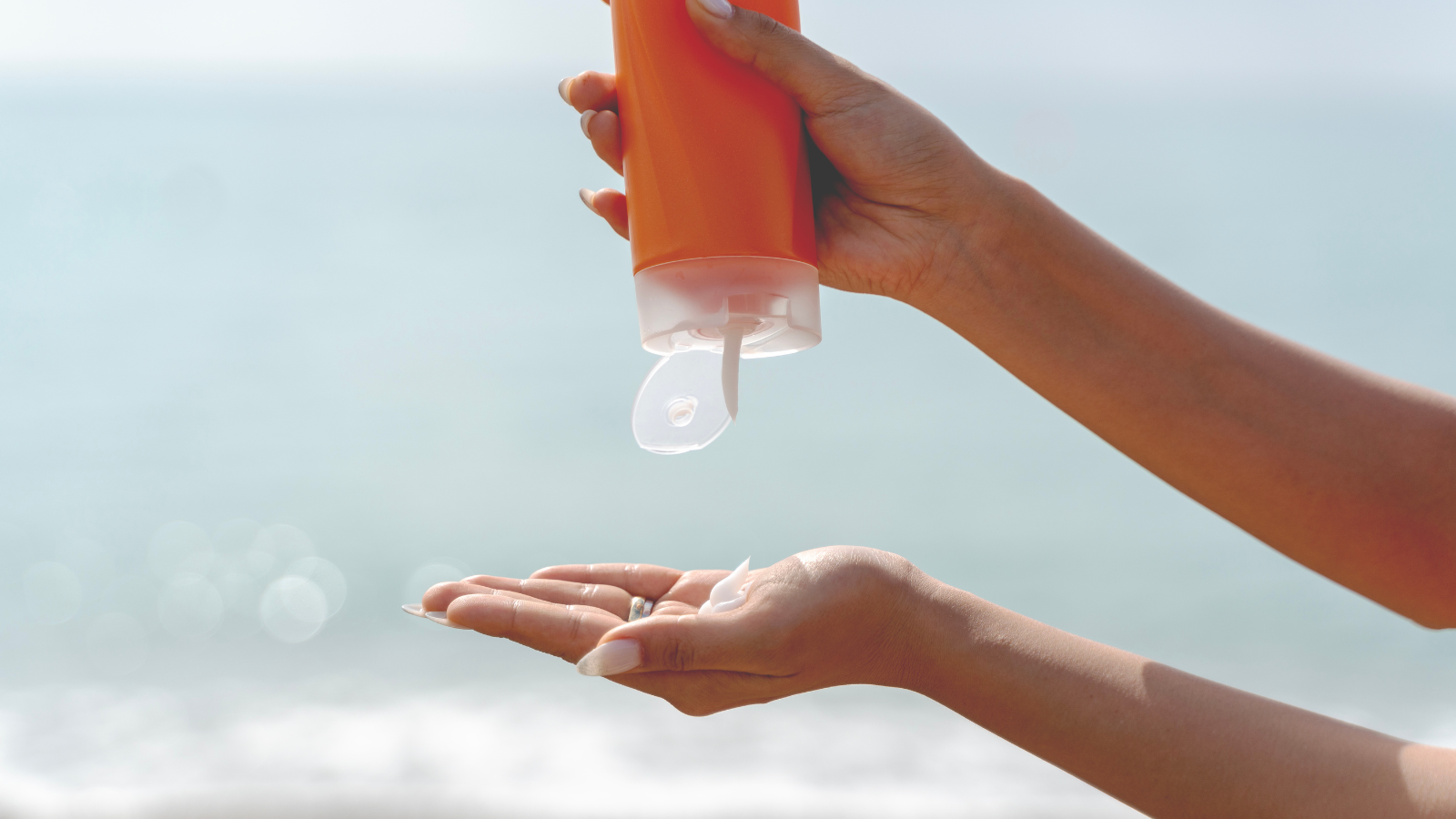Creating an effective skincare routine isn’t just about choosing the right products; it’s about applying them in the correct order for maximum benefits. Layering skincare products properly ensures each one is absorbed effectively, helping you achieve healthier, glowing skin. From lightweight serums to rich moisturizers, every product has a specific place in your routine based on its texture and purpose. In this article, we’ll guide you through the correct order of layering skincare products to maximize results and keep your skin radiant, hydrated, and balanced.
1. Start with a Cleanser
The first step in any skincare routine is to start with a clean base. Cleansing removes dirt, oil, and impurities that have accumulated on your skin throughout the day or night. A clean face allows the following products to penetrate the skin more effectively, ensuring they work to their full potential.

How to Cleanse:
- Use a gentle cleanser suited to your skin type.
- Wash your face with lukewarm water to avoid stripping the skin of its natural oils.
- Pat your skin dry with a soft towel—don’t rub, as this can cause irritation.
Best Types of Cleansers:
- Foaming Cleanser: Ideal for oily and acne-prone skin, as it removes excess oil.
- Cream Cleanser: Best for dry and sensitive skin, as it provides hydration while cleansing.
- Gel Cleanser: Suitable for combination skin, as it cleanses without drying out the skin.
2. Apply a Toner to Balance and Prep
Toners are often overlooked but play an important role in prepping your skin for the next steps. They help restore the skin’s natural pH balance after cleansing and can provide an extra layer of hydration or treatment, depending on your skin’s needs.

How to Apply Toner:
- Apply toner to a cotton pad and gently swipe it across your face, or use your hands to pat it directly onto your skin.
- Allow the toner to absorb fully before moving on to the next step.
Best Types of Toners:
- Hydrating Toners: Great for dry and sensitive skin types, providing extra moisture.
- Exfoliating Toners: Contains ingredients like salicylic acid or glycolic acid, which help prevent acne and refine skin texture.
- Balancing Toners: Ideal for oily or combination skin, these toners help control excess oil.
3. Use an Essence for Added Hydration (Optional)
Essences are lightweight, watery treatments that deliver a concentrated dose of hydration and nutrients to the skin. They’re typically used in Korean skincare routines but are becoming more popular in Western skincare as well. While optional, an essence can enhance hydration and make your skin more receptive to the next products.

How to Apply Essence:
- Pour a small amount of essence into your palms and gently pat it into your skin.
- Focus on areas where your skin feels dry or dehydrated.
Best Types of Essences:
- Hydrating Essences: Provide intense hydration with ingredients like hyaluronic acid or glycerin.
- Brightening Essences: Often contain vitamin C or niacinamide to improve skin tone and radiance.
4. Apply Serums for Targeted Treatment
Serums are the powerhouse of your skincare routine. They contain high concentrations of active ingredients designed to target specific skin concerns, such as wrinkles, dark spots, or dehydration. Since serums are lightweight and easily absorbed, they should be applied before heavier products like moisturizers.

How to Apply Serum:
- Use a few drops of serum and gently pat it onto your face, focusing on problem areas.
- Allow the serum to fully absorb before layering additional products.
Best Types of Serums:
- Vitamin C Serum: Brightens skin and protects against free radicals, ideal for morning use.
- Hyaluronic Acid Serum: Provides deep hydration, great for all skin types, especially dry or dehydrated skin.
- Retinol Serum: A potent anti-aging ingredient, best used at night to reduce fine lines and boost collagen.
5. Treat with Eye Cream
The skin around the eyes is delicate and prone to dryness and signs of aging. Applying an eye cream can help keep this area hydrated and reduce puffiness, dark circles, and fine lines. Use an eye cream after serums but before heavier moisturizers.

How to Apply Eye Cream:
- Dab a small amount of eye cream on your ring finger and gently pat it around the orbital bone, avoiding direct contact with the eyes.
- Use a lightweight, hydrating eye cream in the morning, and a richer, anti-aging formula at night if needed.
Best Types of Eye Creams:
- Hydrating Eye Creams: Ideal for dry, puffy under-eyes, these creams usually contain hyaluronic acid or peptides.
- Anti-Aging Eye Creams: Include retinol or vitamin C to reduce fine lines and brighten the under-eye area.
6. Moisturize to Lock in Hydration
Moisturizer is essential in any skincare routine, as it locks in all the previous layers and keeps your skin hydrated throughout the day or night. Choose a moisturizer based on your skin type and concerns, and apply it evenly over your face and neck.

How to Apply Moisturizer:
- Take a pea-sized amount and gently massage it into your skin using upward, circular motions.
- For added hydration, layer on a heavier cream at night to nourish and repair the skin as you sleep.
Best Types of Moisturizers:
- Gel Moisturizers: Lightweight and refreshing, ideal for oily or combination skin.
- Cream Moisturizers: Rich and hydrating, perfect for dry and mature skin.
- Oil-Free Moisturizers: Great for acne-prone or sensitive skin, providing hydration without clogging pores.
7. Apply Sunscreen (AM Only)
Sun protection is a crucial step that should never be skipped in your morning routine. UV exposure can cause premature aging, dark spots, and increase the risk of skin cancer. Sunscreen is the final step in your morning routine, applied after moisturizer to protect your skin from the sun’s harmful rays.

How to Apply Sunscreen:
- Use a broad-spectrum sunscreen with at least SPF 30.
- Apply generously to your face and neck, and reapply every two hours if you’re outdoors.
Best Types of Sunscreens:
- Mineral Sunscreens: Use zinc oxide or titanium dioxide, ideal for sensitive skin.
- Chemical Sunscreens: Lightweight and easy to apply, suitable for most skin types.
8. Nighttime Routine: Apply a Night Cream or Sleeping Mask (PM Only)
At night, your skin goes into repair mode, making it the ideal time to use a night cream or sleeping mask. These products are typically richer than daytime moisturizers and often contain ingredients that support overnight skin regeneration, such as peptides, ceramides, or plant extracts.

How to Use a Night Cream or Sleeping Mask:
- Apply a small amount as the final step in your nighttime routine.
- Allow the product to fully absorb before going to bed.
Benefits:
- Deeply nourishes and hydrates the skin overnight.
- Supports skin repair and regeneration for a healthier complexion in the morning.
Conclusion: Layer Your Skincare for Maximum Benefits
Layering skincare products in the correct order is essential for achieving the best results. By following a logical sequence—from the lightest products to the heaviest—you can help your skin absorb each layer more effectively and ensure that your products work as intended. Start with cleansing, follow with toner, essence (optional), serums, eye cream, moisturizer, and finish with sunscreen in the morning or a night cream in the evening.
With a well-layered routine, you’ll give your skin the care it needs to stay balanced, healthy, and radiant. Remember, consistency is key, so stick to your routine and adjust as needed to meet your skin’s changing needs.

